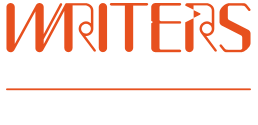
Meg Mundell shares this exercise in eavesdropping in the lead-up to her Novel in a Year workshop on Dialogue.
For a young child, listening is a vital survival skill: we learn to speak by hearing others speak. For a writer, listening is no less crucial – it’s a habit to be honed, a skill to be cultivated. Novelists need to use our ears because talk is to dialogue what life is to art: the raw material that makes a thing ring true.
Like real-life conversation, fictional dialogue can reveal or deceive, illuminate or suggest, intrigue or disturb, elicit empathy or unease. But unlike speech, dialogue must also serve your story, be true to the imaginary world you are creating, and keep your reader engaged. It can draw upon real speech, but it can’t just duplicate it. Dialogue has to work much harder.
Now, forget the idea that eavesdropping is the province of dodgy snoops. Done wisely and well, with a purely creative agenda, covert listening can be a great tool to help develop your writerly ear. Listening closely to a conversation – while transcribing it in full – can help you tune in to the patterns, rhythms and nuances of real speech. And transforming that “found” speech into compelling fictional dialogue can teach you a lot about what works – and what doesn’t.
The exercise…
So, your mission: find a conversation being conducted in a public place, situate yourself unobtrusively nearby, and write down every word you hear. You’ll need a fast pen, and should aim to capture about 100-150 words. The conversation needn’t be riveting, but it will work best if you can find one that interests you, so be prepared for a dull false start or two.
Avoid joining in: you’re purely an observer, an innocent bystander with gigantic ears and a high-speed pen. (It’s also important, in adapting their words for fictional ends, not to reveal the speakers’ real identities. Use your judgement. And covert audio recordings are a definite no-no.)
Type up your transcript and keep it. Then use that raw material to create a short dialogue-based scene from a novel (yours, perhaps?) Feel free to alter the original wording, invent and modify. Aim for verisimilitude, brevity, a dash of dramatic tension. Add a few lines of prose, some description – a gesture or two, an action – but don’t overdo it. Likewise, be sparing with tags, and keep them simple (he said, she said). Read it aloud. Then revise, trim and polish, keeping these key-words in mind: character/voice, subtext, gaps, tension, agendas, context, relationships, conciseness, place.
When you’re happy with your scene, go back and compare the two pieces: what did you keep? What did you change or discard, and why? How did you inject dramatic tension? Based on the changes you made, what makes good dialogue more compelling than everyday speech?
About Meg Mundell
Meg Mundell wrote ‘Things I Did for Money’ and ‘Black Glass’. She has written for The Age, The Monthly, Best Australian Stories, Meanjin, Sleepers Almanac, Financial Review and The Australian, and worked as a lecturer, copywriter and ventriloquist’s assistant.
